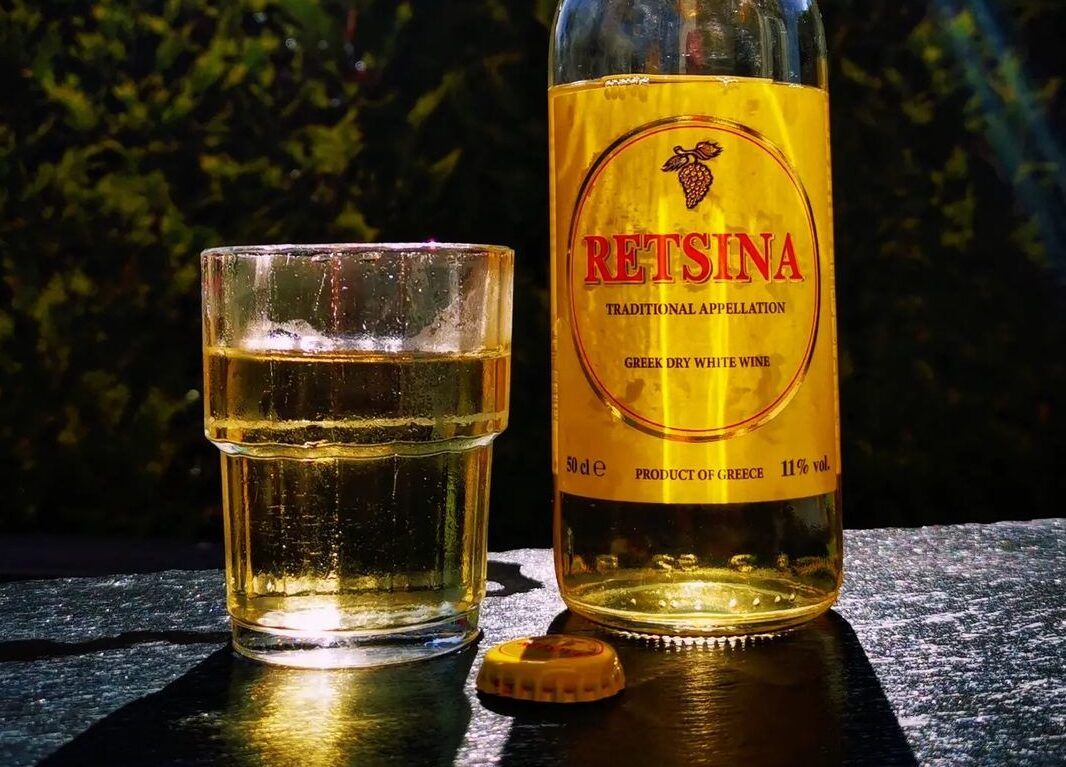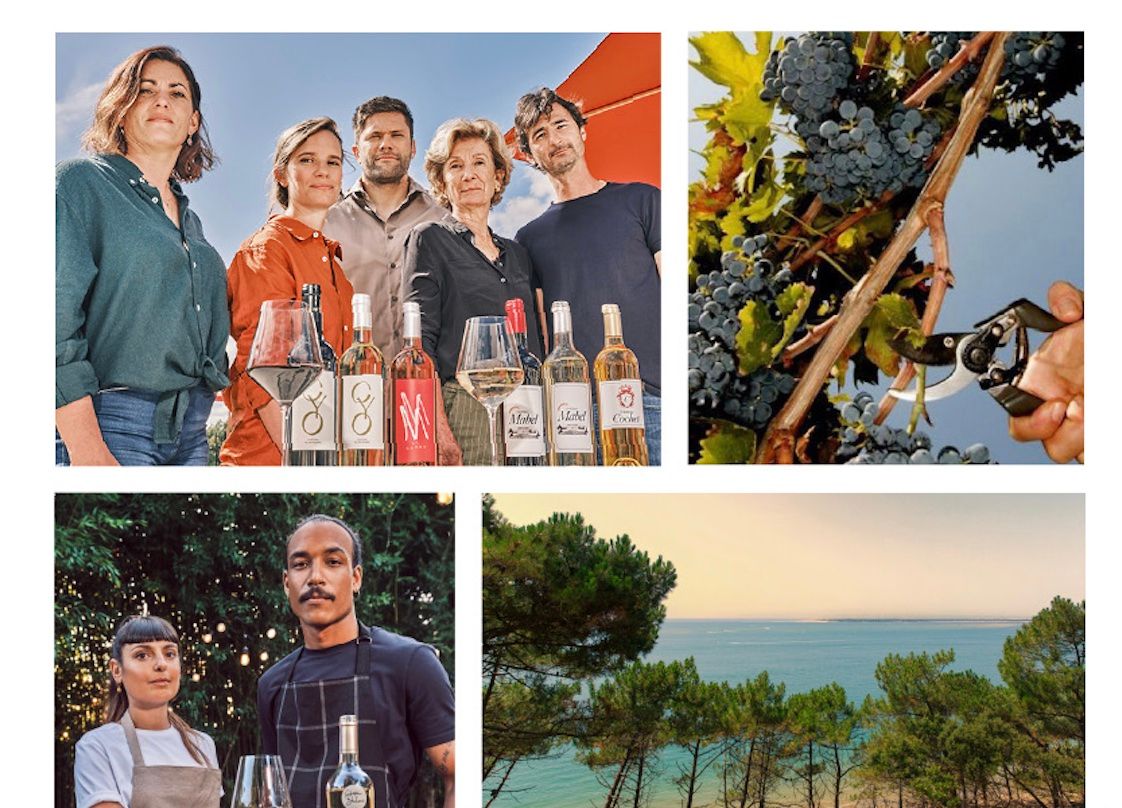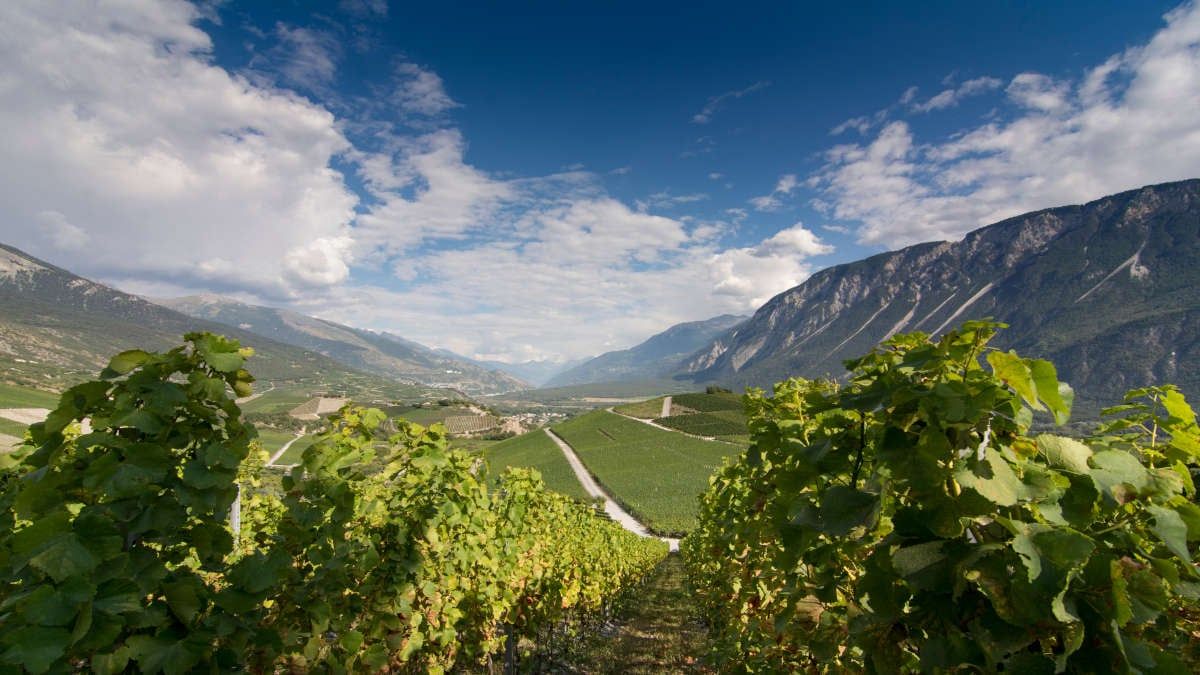“I suspect good retsina might have a willing but unaware audience just waiting to be discovered by brave sellers prepared to put out-of-date prejudices aside,” writes Hawkings.
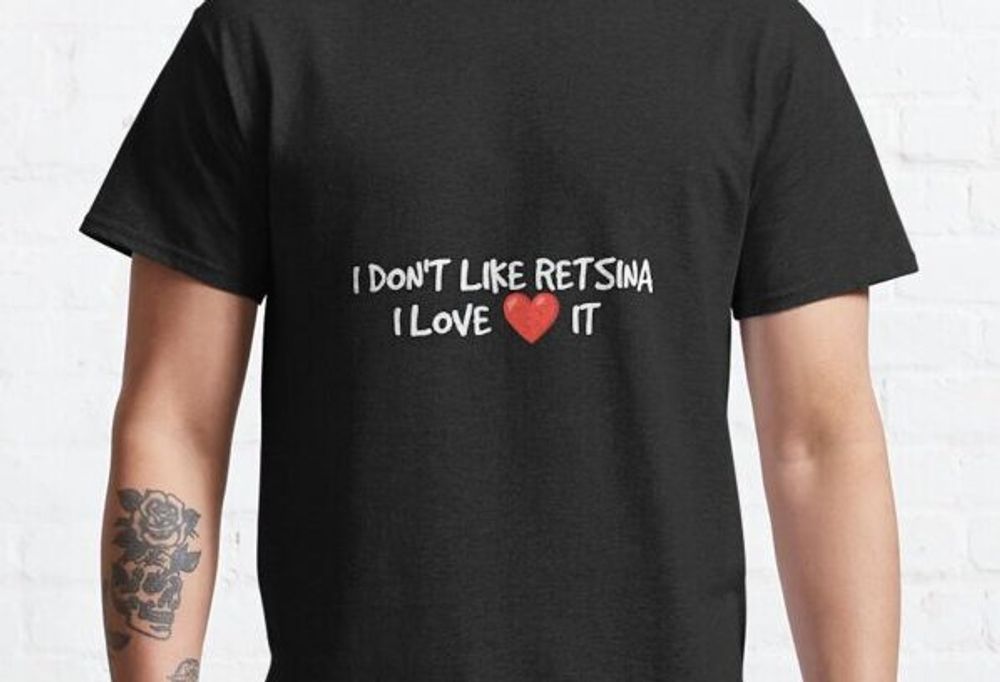
Retsina is a wine that has always strongly divided opinions
I had my first ever proper grown-up hangover after drinking retsina. I woke up on a beach on Crete without my passport, money, or the keys to our rented motorbike, but with the hounds of Hades howling in my head and my eyes almost bleeding in pain, the offending empty, yellow-labelled bottles at the foot of my sweaty sleeping bag.
The retsina had tasted pretty rank, but it was cheap – even cheaper than beer – and rather appealed to my undiscerning but adventurous palate. However, it was more than a quarter of a century before any retsina passed my lips again, the amphora-aged Tetramythos below imported by Eclectic Wines. When I put it on the wine list by-the-glass at the late, lamented Bell’s Diner in Bristol a decade ago, everybody thought I was mad. Perhaps I was; retsina is most definitely a hand-sell wine in restaurants but, in the right hands, these days, it can be a revelation to even the most timorous guests.
Retsina is unique to Greece, where it was not so much invented as discovered. The Minoans sealed their large clay amphora with pine resin and found they rather liked the flavour it imparted to the wine contained within.
Fast forward many centuries to the modern age where, until quite recently, the resin was added largely to cover the quality of inferior, often oxidized, wine – the culprit of so many of those hangovers of our island-hopping youth.
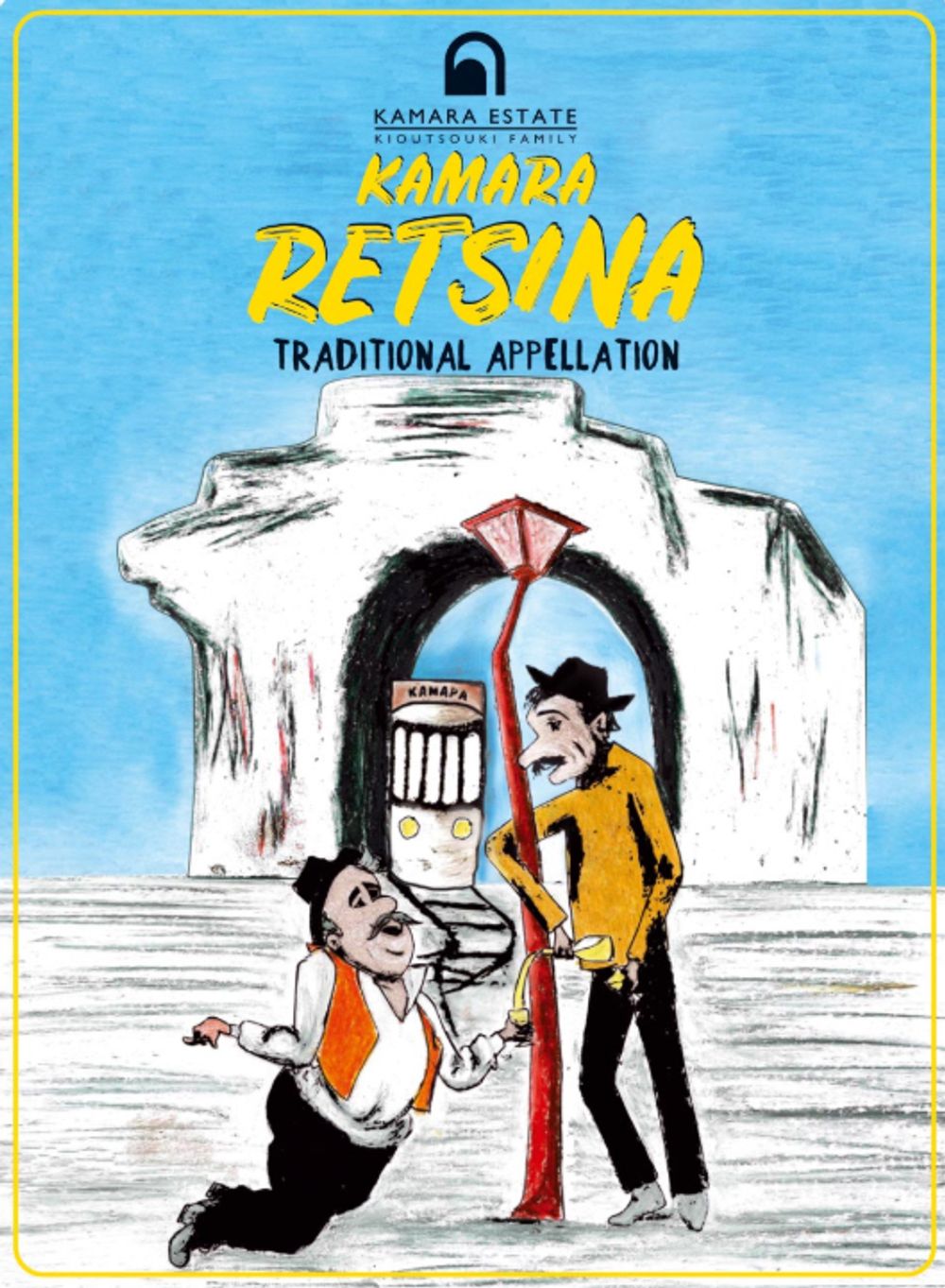
One of the top producers plays on the wine’s reputation
Before the late-1970s, tavernas were only allowed to sell wine if they’d made it themselves. Most bought in must from local growers and fermented it in large wooden barrels, often including resin, from which they’d serve it directly to the customer, either by the glass or poured into jugs or bottles to take away. Often the resin was used to mask bad wine, but some taverna masters prided themselves on their well-made retsina and were well renowned; as far back as 1908, journalists were writing about ‘proper’ and ‘improper’ retsina, and there are tales of people perpetuating the reputation of a ‘bad’ retsina in their favourite tavernas just so others wouldn’t come and drink it.
Until fairly recently, the vast majority of Greek wine production was in the hands of just five industrial makers who flooded the market with dreary bottled wine (not for nothing did we predictably refer to the Demestica wine brand as ‘Domestos’ back in the 80s; even cheap retsina was better than that) and there was nothing available in between these and artisanal wines made at taverns – it was common right up to the 1990s to think bottled wine was inferior to that sold from the barrel by good tavern masters.
Taking on a new lease of life
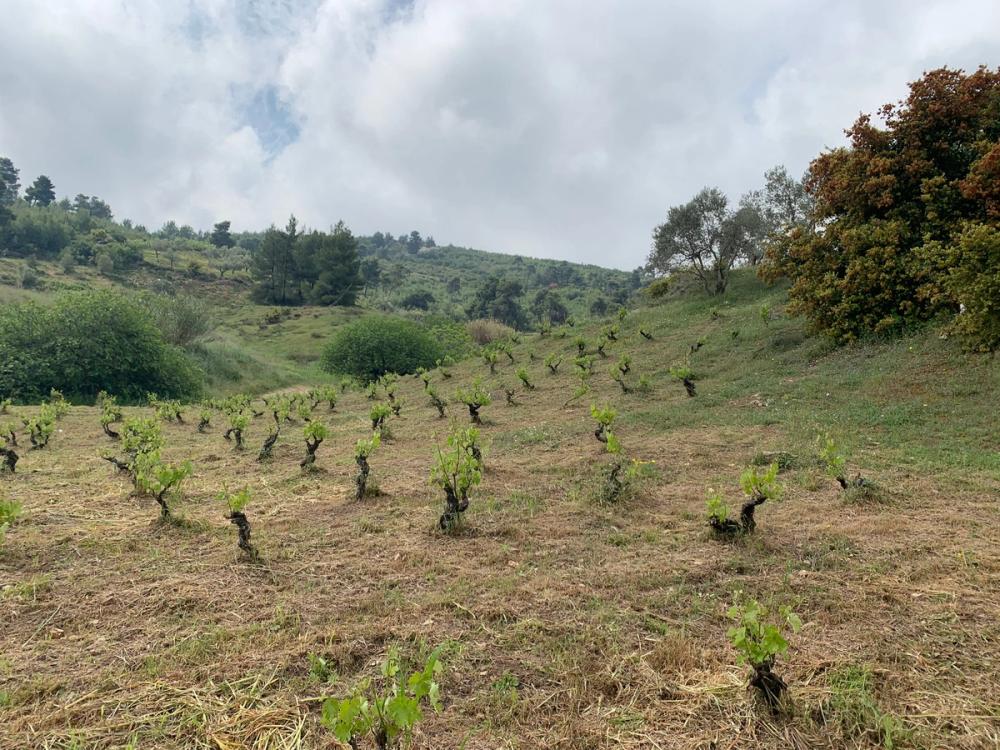
Savatiano vines growing in Attica
These days retsina is being rediscovered by a new generation of winemakers. Now there are over 50 wineries in Attica alone, the wine region immediately surrounding Athens where most retsina is made, mainly from the Savatiano grape though Roditis and Assyrtiko are also used.
Vineyards in Attica rarely rise above about 200m but they are never far from the coast so benefit from the cooling sea breezes. Unirrigated vines thrust their roots towards subterranean sources of both fresh and salt water, which adds to the saline quality of the young wines that become nuttier as they age.
Good retsina starts with good resin, the sap from the Aleppo pine trees that grow profusely throughout Greece. This is added to the wine at the start of fermentation, usually wrapped in a fabric bag. 1kg resin per hectolitre of wine is the maximum permitted, though it’s common for makers to use less than that. Some producers leave the resin in the vessel until fermentation is complete; others remove it earlier to maintain a freshness in the finished wine.
Modern retsinas range in style from those with just a delicate hint of resin among their attractive herbaceous notes – gateway retsina, if you like – to forthright wines with pine to the fore. My favourite style comes with the extra frisson of extended skin contact; I think this adds a texture and shape that the resin rubs along with well, especially if the acidity is well balanced. One producer even makes a traditional method-sparkling retsina, which can’t be labelled as such because this contravenes PGI rules.

It was common right up to the 1990s to think bottled wine was inferior to that sold from the barrel by good tavern masters.
Retsina’s flavour profile calls to mind summers in Greece itself – heady lemon groves, dried mountain herbs, salty sea breezes and pine-covered hillsides alive with the sound of cicadas. For years it was tarnished by the brush of being one of those wines you should only drink on holiday but never drink here, but I can confirm from recent experience that retsina is most definitely just as enchanting and delicious on home soil as it is in Greece.
Wine drinkers have become more adventurous over the past ten years, aided and abetted by the rise of fun and funky natural wines; I suspect good retsina might have a willing but unaware audience just waiting to be discovered by brave sellers prepared to put out-of-date prejudices aside.
What also struck me at a recent tasting is how well retsina suits the robust flavours of rustic Greek cooking, and thus much other Mediterranean-inspired dishes – whether you’re pairing the wine at home or abroad. Flakey pastry specked with salty cheese and spinach; the earthy underbelly of aubergines cooked anyhow; fatty meat grilled over a flame to give it a smokey char; the uber-umami hit of anything involving black olives; oven-roasted potatoes dripping with olive oil and oregano. Retsina rises to all these occasions with great aplomb; it’s my top tip for a leftfield but versatile barbecue wine this summer.
Eight retsinas to buy
This is the yellow-labelled brand that was responsible for my aforementioned hangover, in those days sold in 50cl bottles and described by a friend of mine as ‘like gargling Dettol mixed with diesel.’ The label’s the same (for ‘brand recognition’ purposes I was told; surely something of a double-edged sword?) but the contents have been reformulated with less aggressive resin and better base wine, and is now a perfectly acceptable, simple, entry-level retsina. Serve it VERY cold. £6.00
Tetramythos Retsina Amphorae, Wine Society
Smartly re-labelled from the days when I served it to nervous customers in Bristol ten years ago, this comes from the impressive, organic Tetramythos stable in the Peleponnese. Made in the most traditional way – naturally fermented in open-topped amphorae sealed with resin – but nonetheless immaculately clean, bright and refreshing. Nicely balanced acidity to its rich roditis fruit and herbaceous briskness, it’s great value for money, too. £10.95
Markou Schinopefko Retsina, Amathus
Markou is one of the oldest wineries in the Attica region, dating back to 1928 and still owned and run by the Markou family. Made from 50-year-old vines, this is floral, delicate and slightly saline, it reminds me of warm apricot patisserie with just a subtle hint of pine that won’t frighten the horses. An excellent introduction to retsina for those of a nervous disposition. £13.00
Aoton Retsina of Mesogia, Kudos Wine
A great retsina from a great maker. Organically grown sevatiano and roditis grapes are harvested at night, fermented with indigenous yeasts in temperature-controlled tanks on the skins for 10 days during which 10% of the must is removed and replaced by freshly harvested grapes every 24 hours. This gives an intensity to the savoury, herbaceous body which carries the robust but elegant resin. This cries out for roast chicken. £20.00
Georgas Retsina of Mesogia, Les Caves de Pyrene
Ticking all the classic Les Caves de Pyrene boxes, being biodynamic, natural and orange, this is from a small, producer in the heart of Attica’s Mesogia region and is a really thrilling, single-vineyard wine. Honey-coloured and slightly hazy with a honeyed finish to its complex, peachy, salted lemon and slightly spicy body, it’s terrifically appetising and very beguiling. £17.55
Kamara ‘Nimbus Ritinitis’ Retsina Orange 2021, Natty Boy Wines
Another natural number imported by Les Caves de Pyrene, this comes from Macedonia and is made with assyrtiko grapes. Fermented with natural yeasts and undergoing spontaneous malo before ageing for three months in used barriques and bottling with zero added sulphur. Skin contact gives it a bracing crunch to carry its forthright but well-balanced resin. Wild and rather wonderful. £27.70
Nikolou Botanic Base Retsina, Kudos Wines
A family winery dating back to 1875 but now fully modernised. This is the base wine for the sparkling retsina below; it wears its resin fairly lightly and has a lovely peachiness and tangerine zest with a slightly smokey finish. £12.00
Nikolou Botanic Sparkling Retsina, Kudos Wines
The first of only two sparkling retsinas made in Greece, and unable to use the term ‘retsina’ on the label due to the Attica PGI rules. Free-run juice fermented with resin then undergoes secondary fermentation in the bottle and is aged for 24 months on the lees before disgorging with zero dosage. An incredible nose that first reminded me of ginger but opens to reveal layers of bay leaves, rosemary, quince and candied orange peel. £24.00
The maker was banned from selling its 2018 vintage so has laid down the 2000 bottles it made. I’ll be at the front of the queue when they open it.
